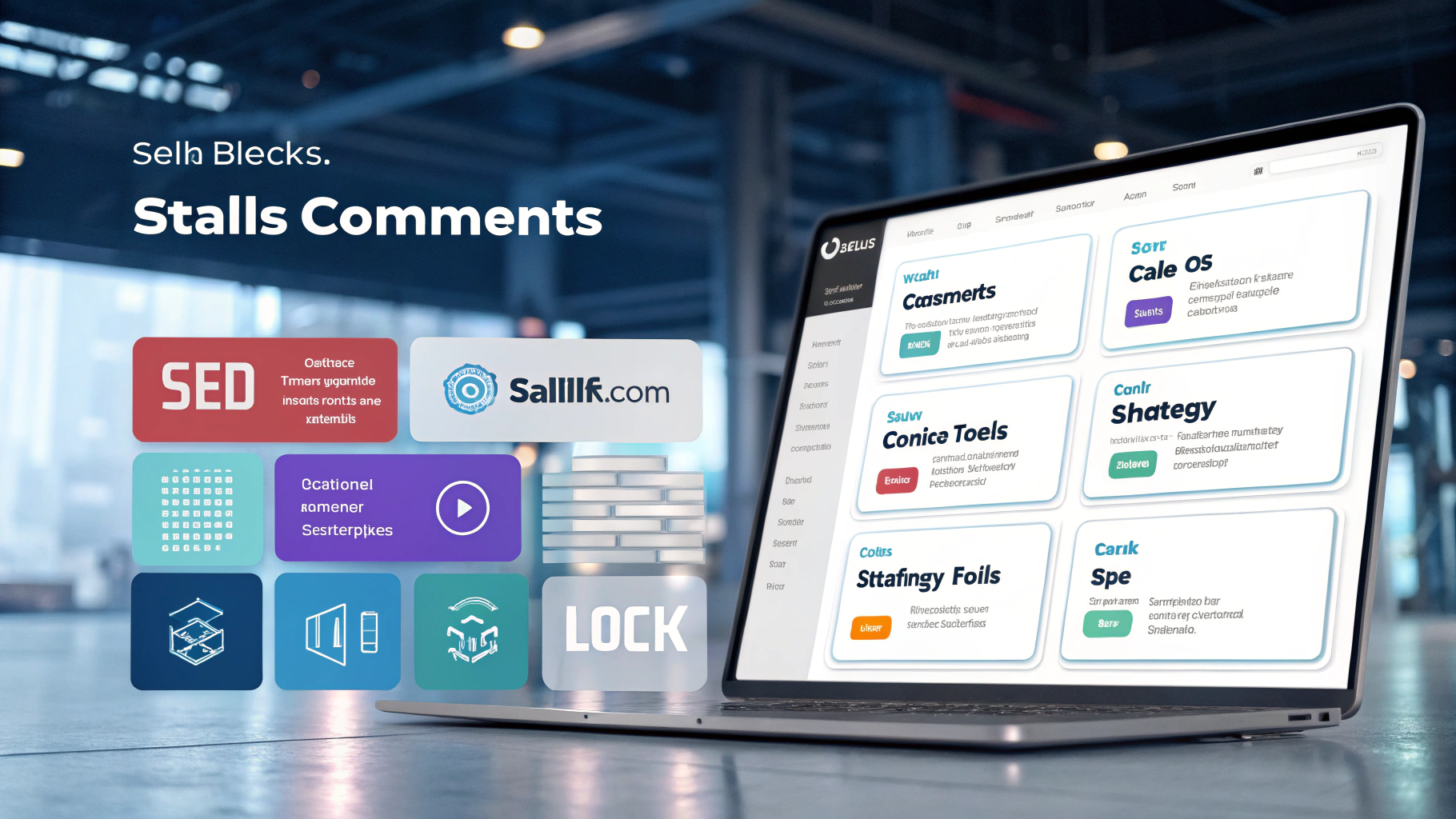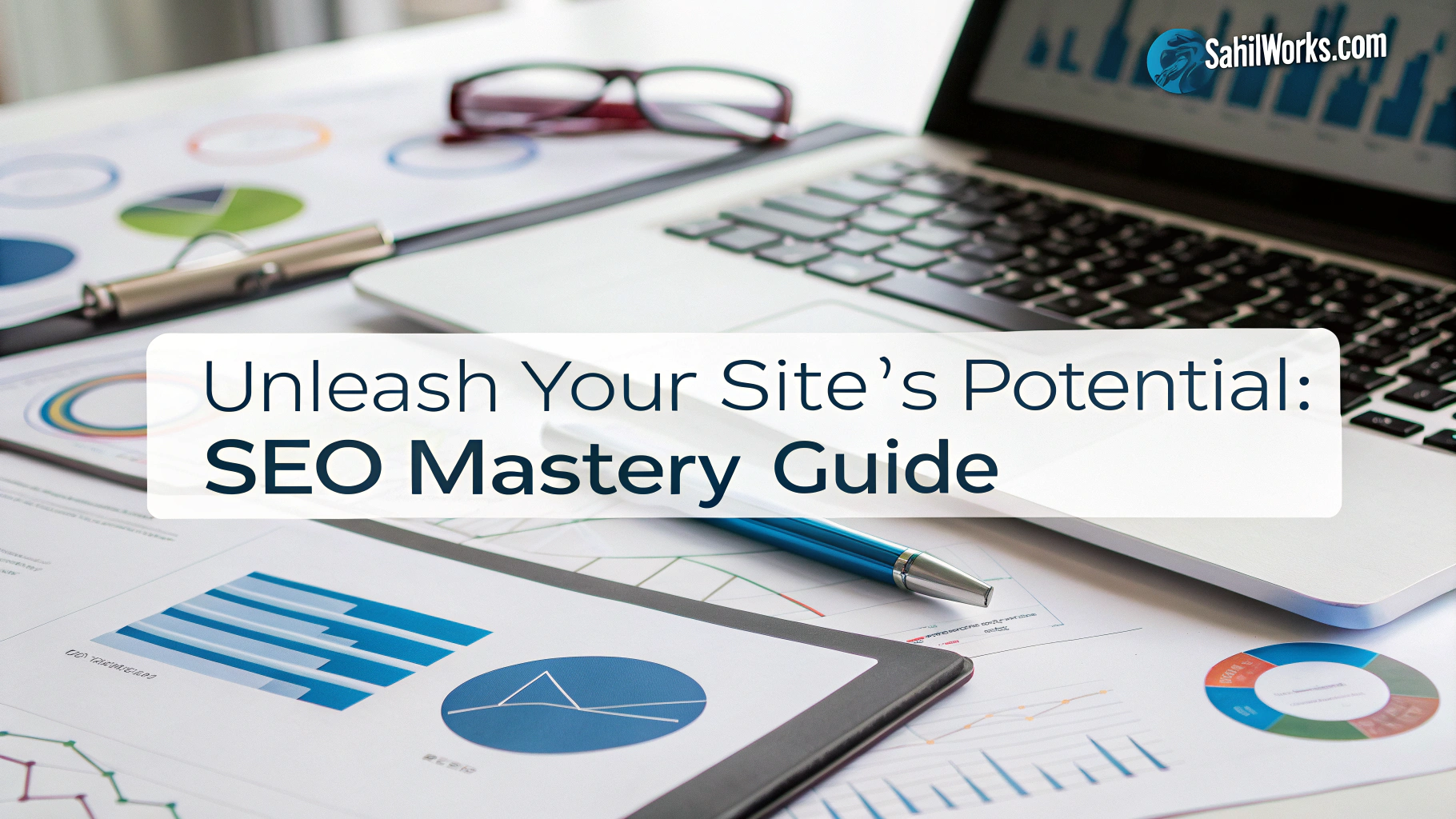Unleash Your Site’s Potential: SEO Mastery Guide
Are you struggling to gain visibility in a digital landscape where 68% of online experiences begin with search engines, yet only 0.78% of Google searchers click on results from the second page? This stark reality highlights why mastering search engine optimization isn’t just beneficial—it’s essential for survival in today’s online marketplace.
Effective SEO Mastery requires more than basic keyword stuffing or occasional blog posts. It demands strategic implementation of proven techniques that align with modern search algorithms and user behavior patterns. Whether you’re a small business owner or a marketing professional, understanding how to properly optimize your site can dramatically impact your digital success and help you Rank Higher on search engine results pages (SERPs).
Why It Matters

The digital marketplace has never been more competitive. With over 1.88 billion websites online today, standing out requires intentional effort. Consider these compelling statistics:
- 75% of users never scroll past the first page of search results
- Websites on the first page of Google capture 92% of all traffic
- SEO drives 1000%+ more traffic than organic social media
- Leads from search have a 14.6% close rate, compared to just 1.7% for outbound leads
These numbers reveal why SEO Mastery isn’t just about visibility—it’s about business viability. Companies that prioritize search optimization consistently outperform competitors in traffic, lead generation, and ultimately, revenue growth.
Core Concepts
At its foundation, SEO Mastery encompasses three critical pillars:
-
Technical SEO: Think of this as your website’s foundation and framework. Like a well-constructed building, technical SEO ensures your site is accessible, navigable, and properly indexed by search engines. This includes site speed optimization, mobile-friendliness, secure connections (HTTPS), and clean code structure.
-
On-Page SEO: This represents the visible structure and content of your building. It involves optimizing individual pages with relevant keywords, compelling meta descriptions, proper heading structures, and quality content that satisfies user intent.
-
Off-Page SEO: Consider this your reputation in the neighborhood. Off-page factors include backlinks from authoritative sites, brand mentions, social signals, and other external indicators that tell search engines your site is trustworthy and valuable.
Understanding these core elements is crucial for any business looking to Google Climb successfully. Each component works synergistically to build your site’s authority and relevance.
Strategy or Implementation Guide
Step 1: Conduct a Comprehensive Audit
Begin with a thorough analysis of your current SEO performance. Identify technical issues, content gaps, and competitive disadvantages using tools like Screaming Frog, SEMRush, or Ahrefs. Document your findings, focusing on:
- Crawl errors and indexation issues
- Page loading speeds across devices
- Keyword gaps and opportunities
- Competitor ranking factors
- Backlink profile quality and quantity
Step 2: Optimize Technical Foundation
Address the technical aspects of your site to ensure search engines can properly crawl and index your content:
- Implement a responsive design that works seamlessly across all devices
- Optimize page loading speeds (aim for under 3 seconds)
- Create and submit an XML sitemap to search engines
- Fix broken links and implement proper redirects
- Ensure proper structured data markup (schema)
Step 3: Develop a Keyword Strategy

Strategic keyword research forms the backbone of effective SEO Mastery:
- Identify high-intent keywords relevant to your business
- Analyze search volume and competition metrics
- Group keywords by topic clusters and user intent
- Prioritize terms based on business value and ranking difficulty
- Create a content calendar addressing each keyword group
Step 4: Create Optimized Content
Develop high-quality content that satisfies both user intent and search engine requirements:
- Craft compelling titles and meta descriptions
- Use proper heading hierarchy (H1, H2, H3, etc.)
- Incorporate primary and secondary keywords naturally
- Include relevant images with optimized alt text
- Create comprehensive content that covers topics thoroughly (aim for 1,500+ words for pillar content)
Step 5: Build Authority Through Off-Page Tactics
Implement strategies to enhance your site’s authority and trustworthiness:
- Develop a strategic link-building campaign targeting quality over quantity
- Create shareable content that naturally attracts backlinks
- Engage in relevant industry forums and communities
- Leverage social media for content distribution and brand visibility
- Establish guest posting relationships with industry publications
Benefits
Applying SEO Mastery principles delivers measurable advantages:
- Sustainable Traffic Growth: Unlike paid advertising that stops when you stop paying, SEO continues delivering results over time.
- Enhanced User Experience: SEO best practices naturally improve site usability and satisfaction.
- Improved Conversion Rates: Properly optimized pages align with user intent, increasing conversion likelihood.
- Brand Credibility: Ranking well signals authority and trustworthiness to potential customers.
- Competitive Advantage: Rank Higher than competitors to capture market share in your industry.
Case Study
Consider a mid-size e-commerce retailer specializing in sustainable home goods. After implementing a comprehensive SEO Mastery strategy focusing on long-tail product keywords and informational content:
- Organic traffic increased by 143% within six months
- Conversion rate improved from 1.2% to 3.7%
- Average session duration increased by 35%
- Customer acquisition cost decreased by 61%
- Revenue from organic search grew by 215% year-over-year
The key takeaway? Strategic SEO implementation doesn’t just drive traffic—it drives the right traffic that converts into customers.
Tools & Resources
Equip yourself with these essential tools to support your journey to Google Climb:
- SEMRush/Ahrefs: Comprehensive SEO analysis and competitor research
- Google Search Console: Free insights directly from Google about your site’s performance
- Google Analytics: Track user behavior and conversion metrics
- PageSpeed Insights: Analyze and optimize site loading performance
- Yoast SEO/Rank Math: WordPress plugins for on-page optimization
- Screaming Frog: Technical SEO auditing and crawl analysis
- Surfer SEO/Clearscope: Content optimization and SERP analysis
Common Mistakes to Avoid
Steer clear of these pitfalls that can derail your SEO progress:
- Keyword Stuffing: Forcefully inserting keywords damages readability and can trigger penalties
- Ignoring Mobile Optimization: Mobile-first indexing means desktop-only focus will harm rankings
- Neglecting Page Speed: Each second delay reduces conversions by approximately 7%
- Poor Quality Backlinks: Low-quality or spammy links can result in manual penalties
- Duplicate Content: Recycling content across pages dilutes SEO value and confuses search engines
Future Trends
The SEO landscape continues to evolve with these emerging trends:
- AI-Driven Content: Search engines are increasingly able to evaluate content quality and relevance through AI
- Voice Search Optimization: By 2025, an estimated 75% of U.S. households will have smart speakers
- Visual Search Expansion: Image recognition technology is becoming increasingly sophisticated
- E-A-T Prioritization: Expertise, Authoritativeness, and Trustworthiness factors gaining importance
- Core Web Vitals: User experience metrics becoming more central to ranking algorithms
Conclusion
SEO Mastery is no longer optional for businesses seeking digital growth—it’s imperative. By implementing the strategies outlined in this guide, you’ll not only improve your search visibility but also enhance user experience, build credibility, and drive meaningful business results.
Remember that SEO is a marathon, not a sprint. Consistent application of best practices, regular monitoring, and adaptation to algorithm changes will yield the most significant long-term benefits. Start implementing these strategies today to secure your position at the top of search results tomorrow.
Ready to transform your website’s performance? Begin with a comprehensive audit, prioritize your action items, and commit to the journey of optimization. Your future customers are searching—make sure they find you first.
FAQs
How long does it take to see results from SEO efforts?
While some improvements may be visible within weeks, significant results typically take 3-6 months, depending on your industry competitiveness, website history, and implementation quality.
Is SEO more important than paid advertising?
Both have their place in a comprehensive digital strategy. SEO provides sustainable long-term results, while paid advertising offers immediate visibility. The ideal approach combines both tactics strategically.
How often should I update my SEO strategy?
Conduct major strategy reviews quarterly, but monitor performance metrics weekly and make minor adjustments as needed. Stay informed about algorithm updates that may require immediate attention.
Can I do SEO myself, or should I hire an expert?
Basic SEO can be implemented by dedicated business owners, but complex strategies and competitive industries often benefit from professional expertise. Consider your time constraints, technical comfort, and competitive landscape.
How do I measure SEO success?
Track key performance indicators including organic traffic growth, keyword rankings, conversion rates, bounce rates, backlink quality/quantity, and ultimately, revenue generated from organic search.

